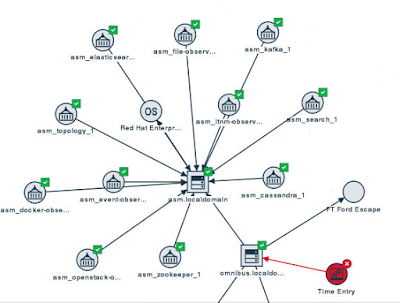Introduction
Our last article described just how easy it is to upgrade any or all of the components of Agile Service Manager. This article is meant to describe some of the design, patterns and processes that had to go into the application itself to allow a two-command in-place upgrade.
Microservices Architecture
Yes, this is a trendy buzzword these days, and that's only part of the reason I'm using it here. In general, a "microservice" can describe almost anything you access over the web - a website, a document, etc. Absolutely anything. But one very important concept about microservices when designing an application is separating functions that then expose all of their capability through some interface. In ASM, there are several "services", each of which is implemented in a Docker container. Each one of these "services" actually provides a number of related "microservices", which are then exposed via URLs accessible through the host system. All of these services communicate with one another through the exposed microservices.
ASM's strict separation of functionality allows a lot of flexibility in application development. For example, one service is the File Observer, which is used to read a file of a specific format, which contains topology information. The main purpose of this service is to read a file and convert it into data that is then sent to the Topology service, which is responsible for processing the data for its purposes and ultimately sending it to the Cassandra (database) service, which will persistently store the data on a filesystem that's available on the host and accessible via the Search/ElasticSearch service. Notice that this application pattern is very similar to existing application patterns, but in this case each service is provided by a separate container.
Containers vs VMs
Docker containers are MUCH smaller than full virtual machines. Additionally, Docker has defined and implemented numerous usecases that make containers easier to create, deploy, configure and orchestrate than VMs. So, while ASM could have been delivered as multiple VMs (via OVA files and some type of hypervisor-specific orchestration), the use of Docker containers makes deployment and management much simpler. I'm saying that a similar result could have been achieved with VMWare vSphere, but IBM's Docker solution for this application seems to be sleeker to me.
Containers vs J2EE Applications in an App Server
In many ways, Docker can be seen as similar to a J2EE Application Server like WebSphere - it provides a common architecture with functions, capabilities and services that are shared among the applications/containers running within it. However, Docker containers can run applications written in any language you want - from Java to R to Haskell. Anything you can run on the host OS can be run inside a container. Containers can also be given strict resource limits for CPU usage, memory, file access, etc. To me, containers seem to be much more like atomic units than J2EE applications.
As an example that I believe many people can relate to, an Application Server can be thought of as your browser, with each tab being an "application". It doesn't happen often, but one tab can crash your entire browser. Docker has been written specifically to avoid this with containers, which is a great thing.
IBM's Design Choices
IBM appears to have chosen this particular pattern in order to make the application as manageable as possible from both perspectives - development AND administration. When upgrading the components of the application, each service/container is basically free to do whatever it wants as long as it continues to adhere to its published REST interface (since REST is the only interface IBM has created for the services).
What does this have to do with DevOps?
DevOps requires frequent building and deploying, ideally in a manner that does not cause any regression test failures. The structure of this application wholeheartedly adheres to this requirement, and it is brilliant.
I'm certain you can think of thousands of ways that this doesn't apply to some application that you deal with, but you should ignore those thoughts when thinking of the future. I truly believe that most, if not all, enterprise-scale applications will be rewritten using either this pattern or one that's extremely similar to it. And everyone in all areas of IT needs to be ready for the new opportunities and challenges that will come with it.






